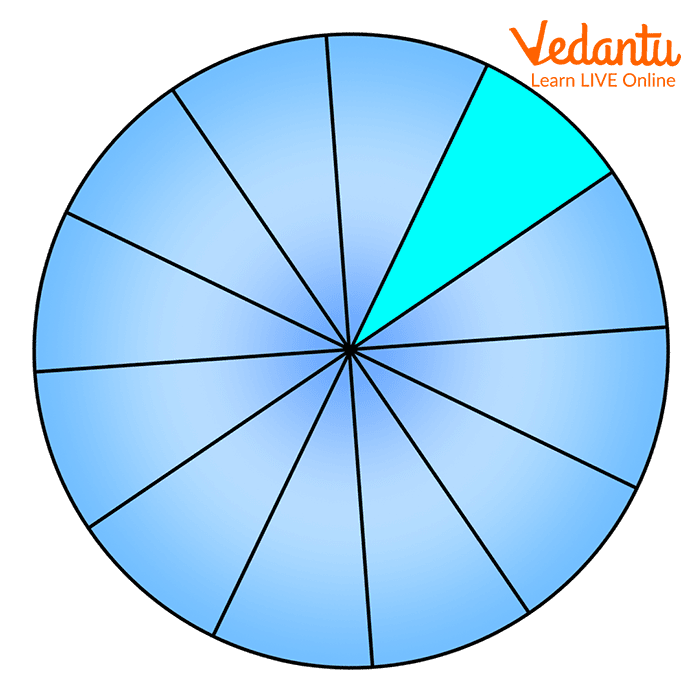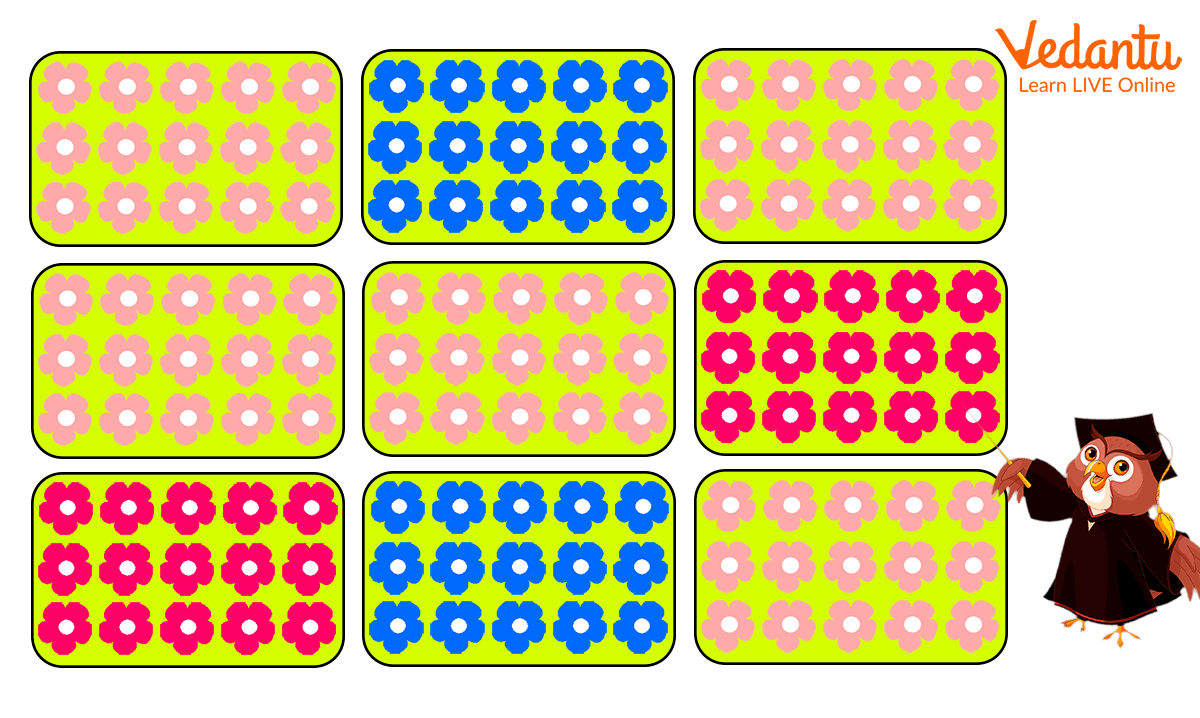




Why Understanding Percentages as Fractions Matters in Maths
What do you do when you and your sibling have to share a large pizza? To avoid a fight between you two, you divide it into several slices of the same size, isn’t it? But how do you know that each slice is of the same size? And how do you divide the pizza?
Well, here Maths comes into play. The topic of fraction in Maths defines the portion or section of a whole object or quantity. Fractions are represented in the form of a numerator and a denominator.
For example, consider this circle. The circle is divided into 12 equal parts and one part is coloured darker than the others. This darker part is called the twelfth part of the circle. In fractions, it can be written as\[\frac{1}{12}\], where 1 = numerator and 12 = denominator.
Every integer is also considered a fraction with denominator 1.

A circle divided into 12 equal parts.
Convert 12% into a Fraction
12% is a term written in percentage form but we need to convert it into the fraction form. But how to do it? To express 12 as a fraction, follow the given step-by-step procedure.
Step 1: Divide the given number in percentage form by 100 like this:
12% = \[\frac{12}{100}\]
Step 2: Now we need to multiply both the numerator and denominator by 10 for every number after the decimal point. Since 12 is an integer with no decimal point, we can just skip to the next step.
Step 3: In this step, we need to simplify the obtained fraction, i.e. \[\frac{12}{100}\] into the simplest form. To simplify any fraction, we find the greatest common divisor (GCD) of the number and then divide both the numerator and denominator by the GCD to obtain our simplified fraction. In this case, the GCD of 12 and 100 is 4.
Dividing 12/100 by 4,
(12 ÷ 4)/(100 ÷ 4) = 3/25
12 percent when written as a fraction in its simplest form is 3/25.
Quiz Time!
1.Convert these percentages into the simplest form of fractions.
18%
25%
76%
55%
2. The given picture shows Sylvia’s garden in which she has grown flowers. Can you tell which flowers she grows the most? Express the part of those flowers as a fraction in its simplest form.

Fraction exercise for kids
Answers:
9/50
1/4
19/25
11/20
Sylivia grows red flowers the most, which are 8 in number out of a total 12 flowers.
Fraction of the field that contains red flowers = 8/12
In simplest form = 2/3
Conclusion
Now you understand the importance of fractions and how you can express percentages as fractions. Using our detailed explanation of how to write 12 as a fraction, you can practice other similar questions yourself. Also, if you want to learn more about such mathematical concepts, explore our website and enhance your learning experience!
FAQs on How to Convert 12% to a Fraction: Step-by-Step Guide
1. What is the step-by-step process to convert 12% into a fraction?
To convert 12% into a fraction, you can follow these simple steps as per the CBSE/NCERT curriculum for the 2025-26 session:
First, remove the percentage sign (%). The term 'per cent' means 'per hundred'.
Write the number 12 as the numerator and 100 as the denominator. This gives you the initial fraction: 12/100.
Finally, simplify the fraction by dividing both the numerator and the denominator by their greatest common divisor, which is 4. This results in the fraction 3/25.
2. What is 12% as a fraction in its simplest form?
In its simplest form, 12% is equal to the fraction 3/25. This is calculated by first writing 12 percent as 12/100 and then simplifying it. Since both 12 and 100 are divisible by 4, dividing the numerator (12) by 4 gives 3, and dividing the denominator (100) by 4 gives 25.
3. Why do we use 100 as the denominator when converting a percentage to a fraction?
The reason we use 100 as the denominator is because the word 'percent' originates from the Latin term 'per centum', which literally means 'by the hundred'. Therefore, any percentage is a representation of a part of a whole that is divided into 100 equal parts. For example, 12% means 12 parts for every 100 parts, which is naturally expressed as the fraction 12/100.
4. How is converting 12% to a fraction different from converting it to a decimal?
Both conversions start from the concept of 'per hundred', but the final form is different.
To get a fraction, you write 12 over 100 (12/100) and then simplify it to its lowest terms, which is 3/25.
To get a decimal, you perform the division of 12 by 100, which results in 0.12.
So, while 3/25 and 0.12 represent the exact same value, they are just different mathematical notations for it.
5. What are some real-world examples where understanding 12% as a fraction is useful?
Understanding that 12% is 3/25 is very useful in daily life. For instance:
Shopping Discounts: If a product worth ₹500 has a 12% discount, you can quickly calculate the discount as 3/25 of 500, which is ₹60.
Calculating Interest: If you are calculating a simple interest of 12% on a loan, you are essentially calculating 3/25 of the principal amount for each period.
Recipes and Ingredients: If a recipe calls for using 12% of a 1kg (1000g) bag of flour, you can calculate this as 3/25 of 1000g, which is 120g.
6. How would you convert the fraction 3/25 back to a percentage?
To convert a fraction back into a percentage, you simply multiply the fraction by 100 and add the percent symbol (%). For the fraction 3/25, the calculation would be:
(3/25) × 100% = 12%.
This method is a great way to check if your initial conversion from percentage to fraction was correct.
7. Does the conversion method change for a decimal percentage like 12.5%?
The fundamental principle remains the same, but there is an extra step. For 12.5%, you would first write it as 12.5/100. Because a fraction should not have a decimal in the numerator, you must multiply both the numerator and the denominator by 10 to eliminate the decimal. This gives you 125/1000. Finally, you simplify this fraction to its lowest terms, which is 1/8.









